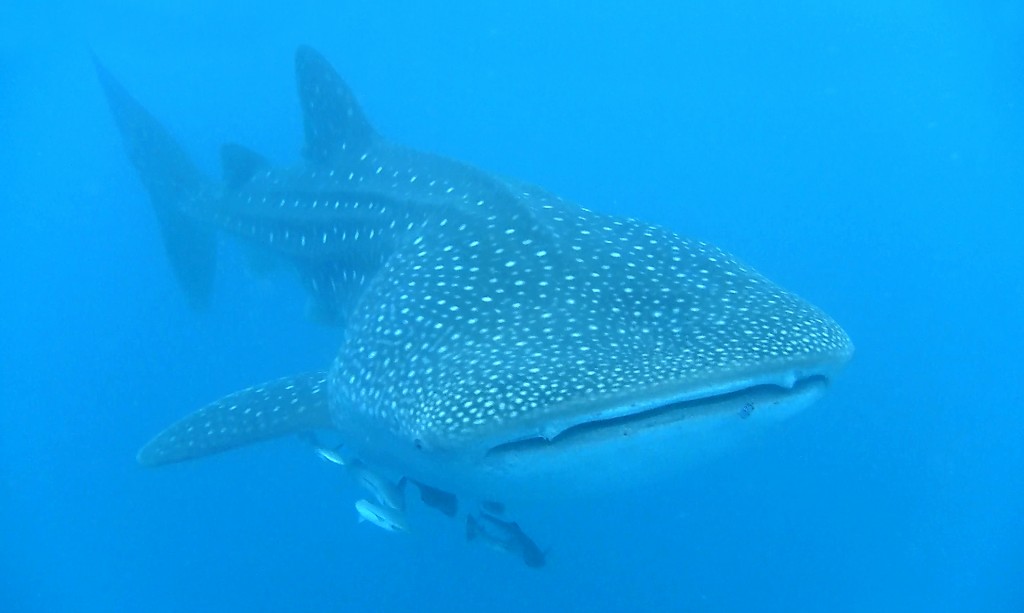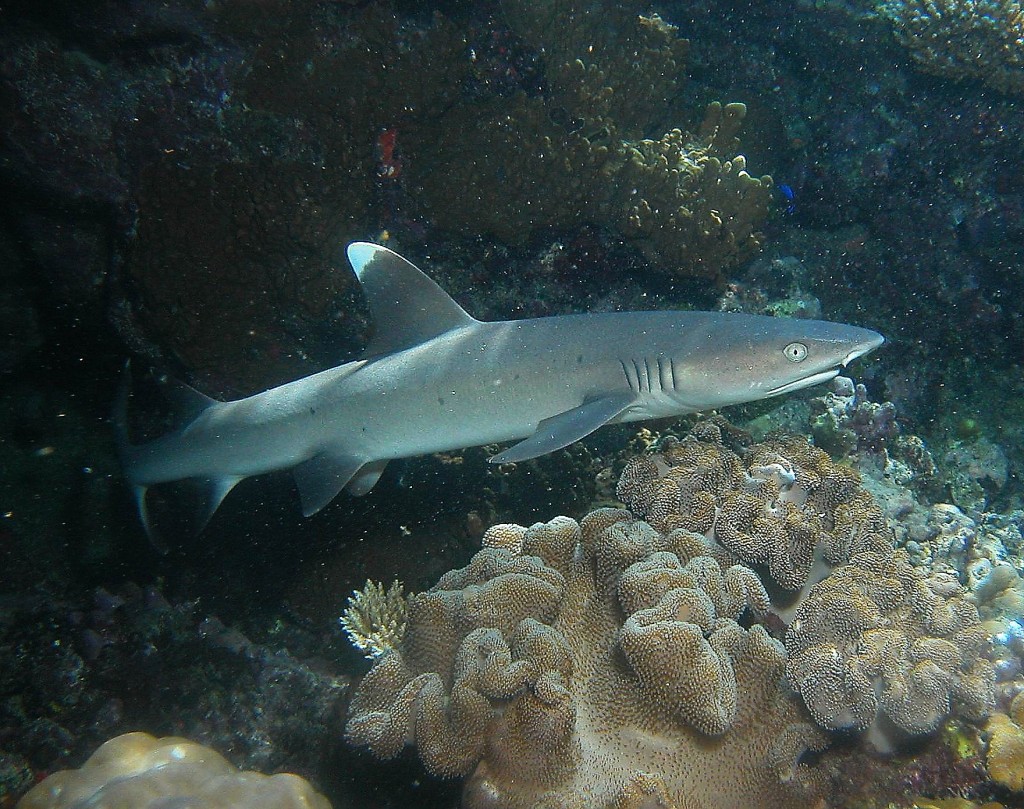One of the many questions the marine biologists get asked on the reef is “Will we see any sharks today?” The answer is it is distinctly possible, but probably not the species that most people immediately consider. Chances of encountering a tiger shark or a hammerhead are very slim, but the lagoon waters and reef edges are home to a large range of species, such as the black tip shark, the grey reef whaler, and the most commonly seen of all, the white tip reef shark.
The world’s oceans are home to over 370 species of sharks, half of which occur in Australia, and the great majority of these are completely harmless to humans and less than 2m in length. Sharks have been around for over 400 million years in a relatively unchanged form (when you’re on a good thing, stick to it!), with some fossils dating back to the Silurian period. Sharks differ from other fishes by having a cartilaginous skeleton instead of a bony one (a characteristic that they share with rays) and exposed gill slits.
Male and female sharks can be differentiated by the male having two claspers (which are modifications of the pelvic fins). These appendages are used to transfer sperm internally to the female. Some sharks, like the Port Jackson shark, lay eggs, but the vast majority give birth to live young. Some sharks, particularly members of the whaler family, in gauge in intra uterine cannibalism, where the first internally hatched young will eat the other developing eggs and young inside the mother.
Most sharks can live for up to 30 years, and are sexually mature at 7-8 years, however there are some exceptions, with some species living for up to 70 years. Reproduction rates are also highly variable, with white tip sharks only breeding every second year, making them vulnerable to over fishing. In 2001, the East Coast Fishery for shark harvesting was banned by the Queensland Government, bringing it into line with the Northern Prawn Fishery, which had already voluntarily banned shark collection. The compulsory use of Turtle Excluder Devices (TED) has also reduced the amount of sharks accidentally caught in prawn nets.
Sharks are not exclusive meat eaters, with the two largest species, the Whale shark and the Basking shark, feeding on plankton, and Port Jackson sharks feeding on sea urchins. However, the majority are true carnivores. The well known species like the tiger shark and other whalers have teeth with serrated edges, designed to cut through flesh as they thrash their heads from side to side. Sharks are opportunistic feeders, but are unlikely to go looking for food outside of their normal selection if they are living in a well balanced environment such as the Great Barrier Reef.
Whale sharks are certainly one of the top shelf viewing experiences on the Great Barrier Reef. These animals grow to over 15m long, and are encountered at the ocean surface around plankton blooms. They open up their mouths (up to 2m wide), and use gill rakers to strain the water as they cruise along the surface. Interestingly, they have over 300 small teeth, but don’t use them! Guidelines have been established to protect whale sharks from overly enthusiastic swimmers.
Generally, visitors to the Great Barrier Reef witness sharks doing what they do best during the day, which is nothing! White tips are often found lying on the sand near overhangs or caves, and are mainly active at night time.
So, if you encounter a shark on your visit to the reef, consider yourself lucky, and make sure you tell all your friends. Guarantee that by the end of the day, the shark you saw will have doubled in length!



